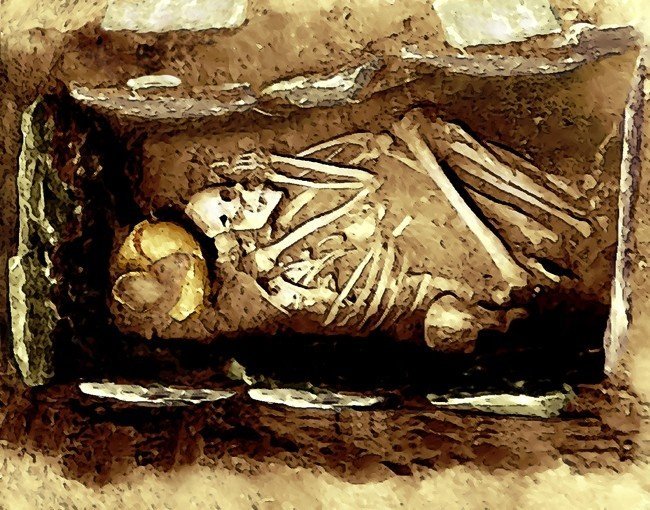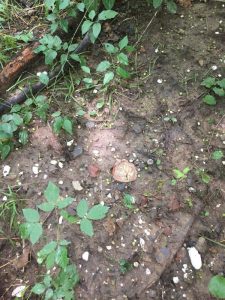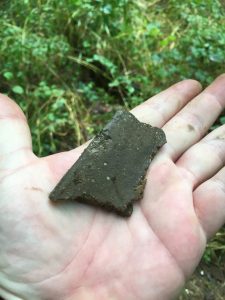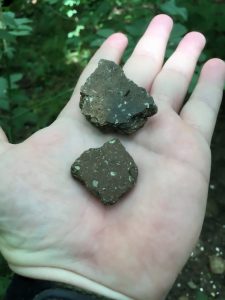

A phenomenon in the region I currently work in with the Mississippian culture is the use of the “stone box grave.” Essentially, when a person dies, the relatives place the body in a kind of “coffin” made made of large flat stones on all, or mostly all, sides. Within, there are sometimes grave goods, such as pottery vessels. Perhaps this is a way of ensuring the dead have something to store water or food in for the afterlife. Perhaps these are sacrificed goods in honor of the dead.
The Wikipedia entry for stone box graves says that grave goods often accompanied the dead, but at least one source I read elsewhere seemed to indicate that grave goods were not so frequent.

Sometimes the dead were laid in the box in a flexed position, but often they were extended. Often these graves were associated with mounds, but not always. And not all who died were interred in this fashion. Sometimes the stone boxes were re-used, with the previously interred’s bones disarticulated and moved aside for the newly deceased.

One thing is for sure, looters in search of grave goods were proficient at locating these graves on the landscape. Many of the known stone box grave sites in and around the forest I work on were looted in the recent past, definitely as recent as the 1970s. But these sites are known within the collector communities of the regions they’re in -once looted, their locations, if protected by resource stewards, are now also protected as “good hunting spots” for artifacts.

Recently, a colleague and I had the opportunity to visit the location of a looted stone box grave site that is very, very near our Forest. It was public land with public access, so I’ll not be sharing the location information. In fact, the geotag references from the EXIF section of the metadata in the photos have been stripped.

The site was interesting, very near a modern reservoir but it would have been near the Cumberland river confluence with a seasonal or perhaps permanent stream. Other federally hired archaeologists were on the site nearly a decade ago, doing shovel tests and determining the extent of the site and what was left after years of looting. So we weren’t expecting to find artifacts. We were more interested in the lay of the land for comparative purposes.
Arriving at the former locations of the graves, we began seeing decade old flagging tape and, eventually, heavy steel rods for datums. Then we noticed the armadillo burrows. Nature’s little shovel testers! In the dirt removed from the burrows, we found many, many shards of shell tempered pottery and broken flakes, some showing use. All the kind of stuff looters disregard. They like the whole pots and intact “arrowheads” (though most are decidedly not arrowheads.
It was an interesting walk in the woods. Now, if we can only find this sort of site, untouched by looters, on our Forest.
Leave a Reply
You must be logged in to post a comment.